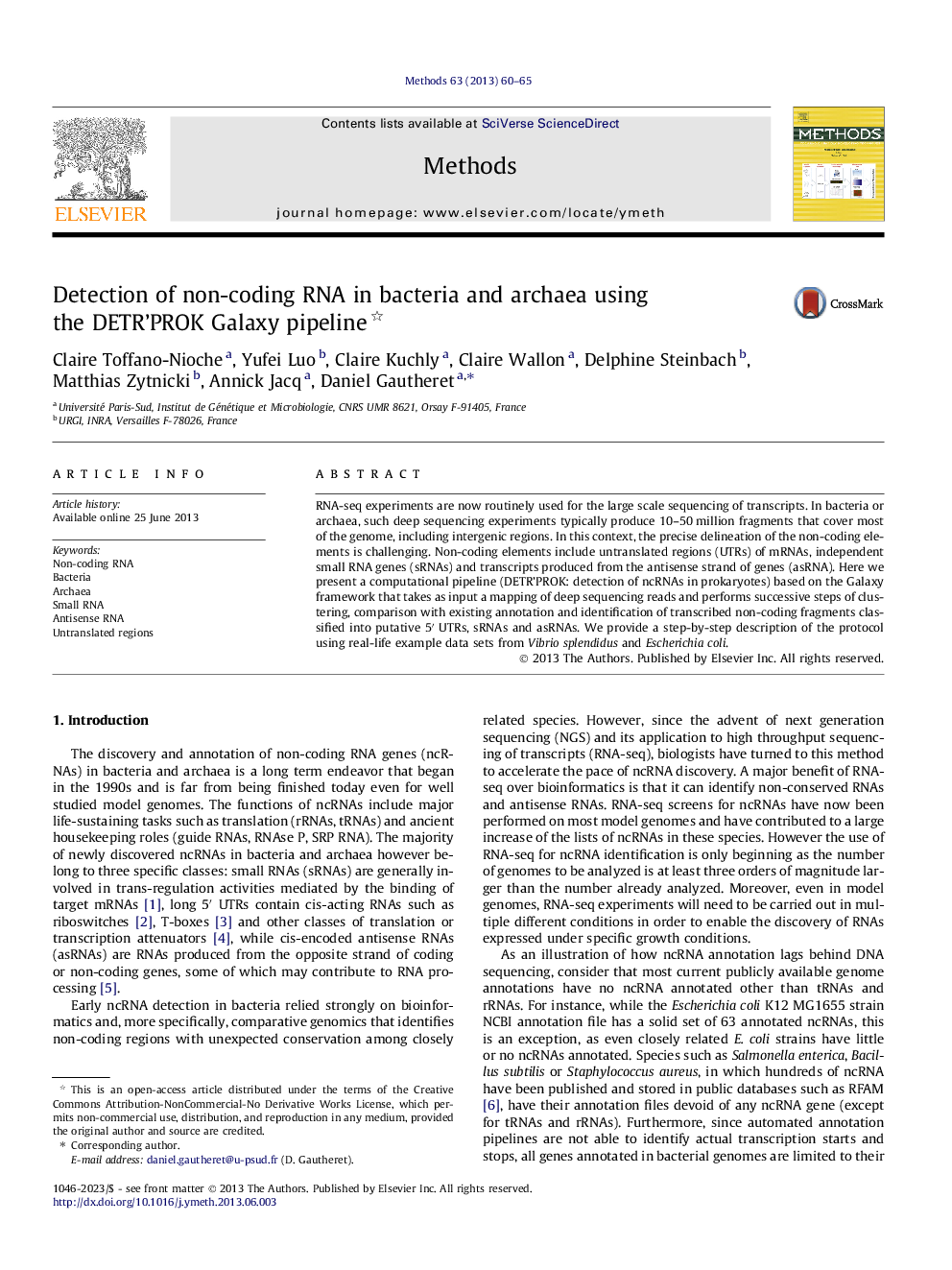| Article ID | Journal | Published Year | Pages | File Type |
|---|---|---|---|---|
| 10825816 | Methods | 2013 | 6 Pages |
Abstract
RNA-seq experiments are now routinely used for the large scale sequencing of transcripts. In bacteria or archaea, such deep sequencing experiments typically produce 10-50Â million fragments that cover most of the genome, including intergenic regions. In this context, the precise delineation of the non-coding elements is challenging. Non-coding elements include untranslated regions (UTRs) of mRNAs, independent small RNA genes (sRNAs) and transcripts produced from the antisense strand of genes (asRNA). Here we present a computational pipeline (DETR'PROK: detection of ncRNAs in prokaryotes) based on the Galaxy framework that takes as input a mapping of deep sequencing reads and performs successive steps of clustering, comparison with existing annotation and identification of transcribed non-coding fragments classified into putative 5â² UTRs, sRNAs and asRNAs. We provide a step-by-step description of the protocol using real-life example data sets from Vibrio splendidus and Escherichia coli.
Related Topics
Life Sciences
Biochemistry, Genetics and Molecular Biology
Biochemistry
Authors
Claire Toffano-Nioche, Yufei Luo, Claire Kuchly, Claire Wallon, Delphine Steinbach, Matthias Zytnicki, Annick Jacq, Daniel Gautheret,
